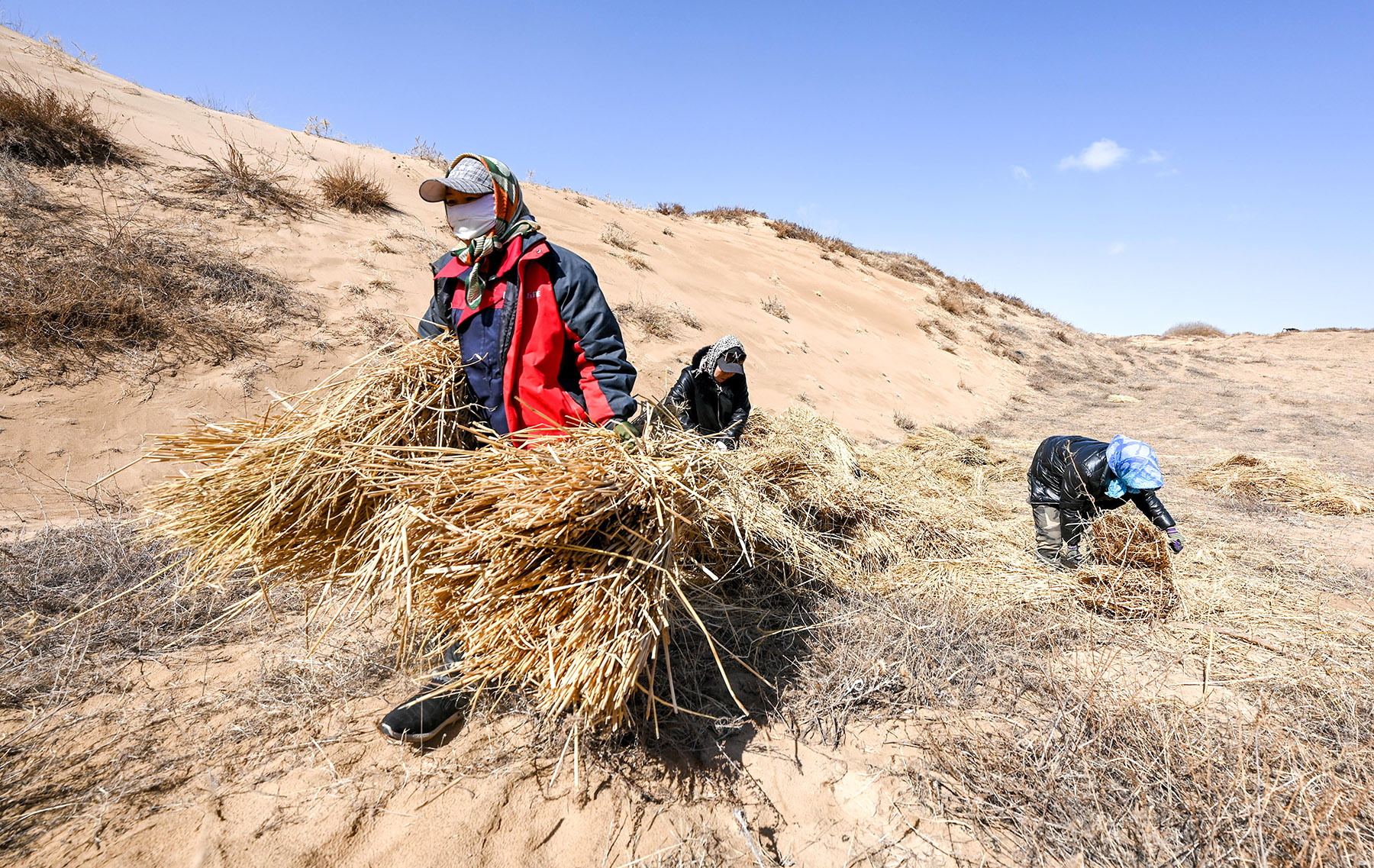Horqin left banner turns desolation to green by embracing natural methods

On grassland in Horqin Left Wing Rear Banner, clusters of white flowers bloom on the Chinese hawthorn. In this area, where grazing is prohibited, trees, shrubs and grass coexist, presenting a green landscape in the spring.
Horqin Left Wing Rear Banner is located in the southeastern part of Horqin Sandy Land in the Inner Mongolia autonomous region. Due to ecological imbalances, the land here had a desertification rate as high as 80 percent decades ago, making it one of the most severely desertified areas in the country with an extremely fragile ecology.
"The Chinese hawthorn is a typical native tree species, and its growth plays a crucial role in improving the local ecosystem. We have been researching the optimal tree density for the best natural ecological restoration," said Wang Feng, a professor and the director of the Policy and Strategic Development for Combating Desertification, Chinese Academy of Forestry.
He emphasized that the goal is not to completely eradicate every grain of sand but to stabilize and balance the sand by having grass, trees and shrubs present.
READ MORE: Tongliao tackles desertification
Wang explained that this grassland is a sparse tree grassland, a naturally formed landscape. The terrain of the sand dunes is uneven, making engineering methods challenging, so natural restoration methods are more suitable.
"In this area, with Chinese hawthorn, maple, elm trees and some shrubs in between, a symbiotic ecosystem of trees, shrubs and grass has formed. Without overgrazing and large-scale cultivation, based on the natural conditions here, this natural landscape can be maintained. Once this state is achieved, the sand will no longer shift, and the sand dunes will no longer pose a threat," he said.
Chen Hui, Party secretary and director of the Forestry and Grassland Bureau of Horqin Left Wing Rear Banner, mentioned that to advance the governance of the sandy land, the local government has implemented comprehensive grazing bans in certain areas.
"Depending on local conditions, the autonomous region and banner government provide subsidies to herdsmen, which can be used to purchase feed to raise cattle and sheep. As long as the farmers' income is ensured, everyone will naturally cooperate to protect the forests and grasslands, helping to achieve a faster restoration of the natural landscape," he explained.
In addition to grazing bans, in recent years Horqin Left Wing Rear Banner has been planting trees.
"In Horqin Sandy Land, where evaporation rates are high and wind speeds are significant, the local area has developed the 'deep planting and shallow burial' afforestation technique based on these environmental characteristics," said Chaoke Tu, director of Horqin Left Wing Rear Banner Forestry Station.
"Deep planting and shallow burial" is a new planting technique, involving planting seedlings in deep pits and covering them with a shallow layer of soil.
He mentioned that over the past decade, using this method to plant Mongolian Scot pine trees has increased survival rates to over 90 percent from about 50 percent. The seedlings grow vigorously, saving around 15,000 yuan per hectare in costs and reducing watering frequency by half, saving more than half the water resources.
ALSO READ: Two decades of tree planting revives home village
Horqin Sandy Land is China's largest sandy area and one of the three main battlefields of the "Three-North" Shelterbelt Project of China, covering parts of Inner Mongolia, as well as Liaoning and Jilin provinces. In Inner Mongolia alone, the total area exceeds 5.7 million hectares and involves Tongliao and Chifeng cities, as well as Hinggan League.
The "Three-North" project covers 13 provinces and regions in the north of China and the Xinjiang Production and Construction Corps, with a total area exceeding 42 percent of the country's land area. Begun in 1978, the project is expected to last until 2050.
In Horqin Sandy Land, people employ methods such as using grass to stabilize the sand, aerial seeding for afforestation, road-based sand control and photovoltaic sand control to advance the governance of the sandy land.
By 2030, the autonomous region plans to achieve a desertification control rate of over 85 percent in Horqin Sandy Land.


